Pimples After a Hair Transplant: What to Do?
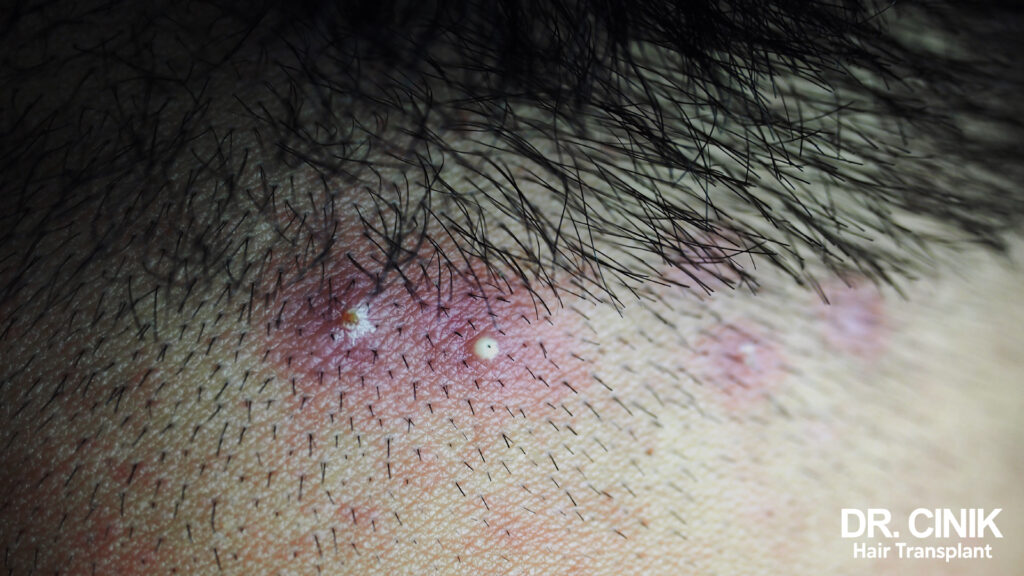
Sommaire
Pimples after a hair transplant are a common skin reaction that affects around 15-20% of patients in the days following the procedure (Kerure & Patwardhan, 2018). These skin manifestations are characterised by the appearance of small localised eruptions on the scalp, sometimes accompanied by red patches and sebaceous cysts.
These pimples generally appear between the 3rd and 7th postoperative day, peaking in intensity around the 5th day. Although rather unpleasant, they are temporary in most cases and resolve naturally in 2 to 3 weeks with appropriate care (Konior, 2013).
This inflammatory reaction can lead to more or less intense itching and increased sensitivity of the scalp. The discomfort experienced, although temporary, can generate a degree of anxiety in patients. But don’t worry! These symptoms are part of the normal healing process (Umar et al., 2021).
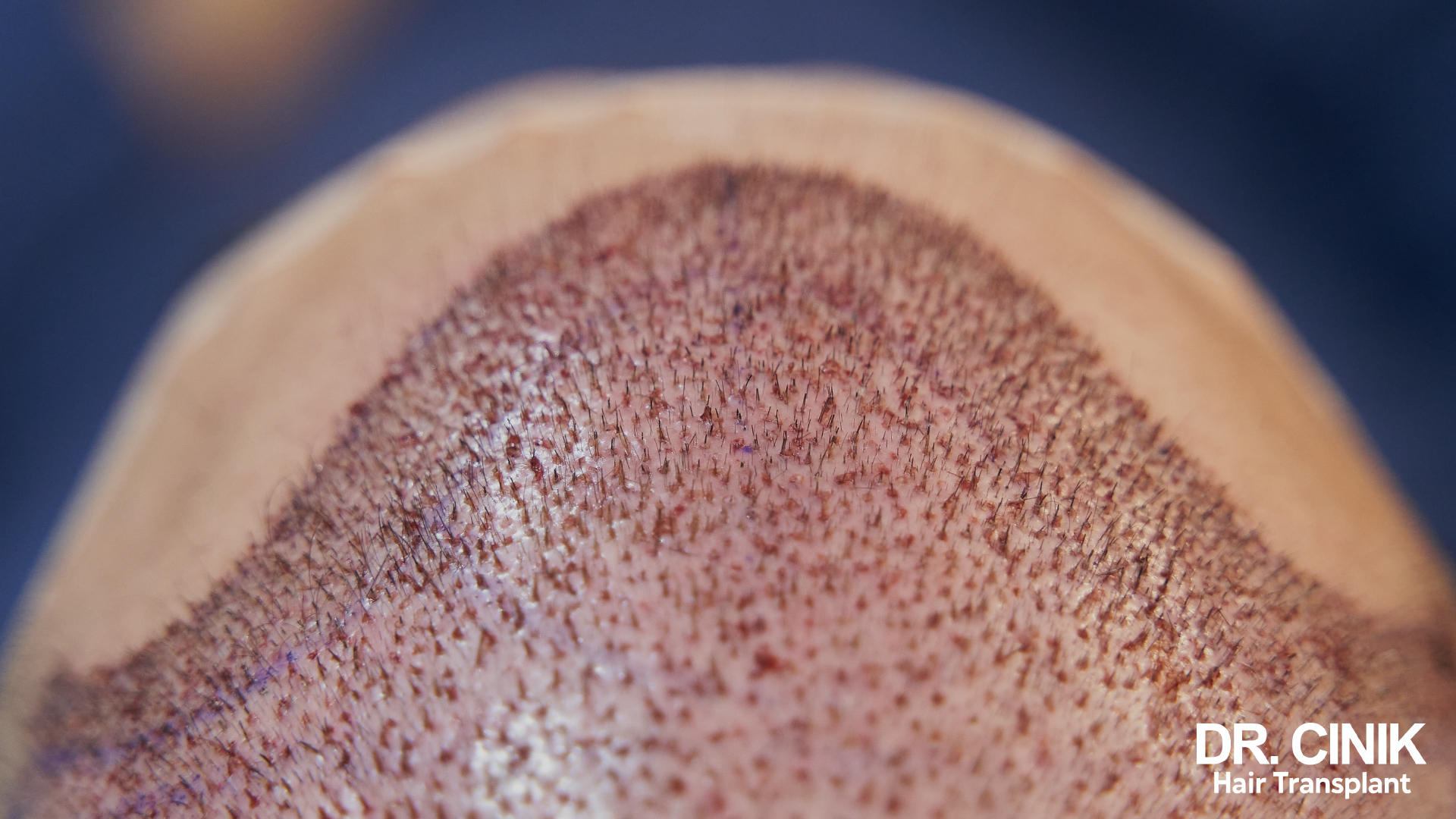
With rigorous monitoring of post-operative recommendations and appropriate care, these pimples generally do not impact the final result of the graft. Dr Cinik and his team provide personalised support throughout the recovery period to optimise the healing process.
Skin Manifestations After a Hair Transplant
Expected Normal Reactions
The immediate post-operative period is characterised by a series of normal and expected skin reactions. During the first few days, the patient usually observes small red papules measuring 2 to 3 millimetres in diameter, accompanied by slight localised oedema on the scalp. Moderate sensitivity to touch and a sensation of local heat are also common (Kerure & Patwardhan, 2018).
This inflammatory response follows a precise and predictable timeline. The first 48 hours are marked by characteristic redness and swelling. Between the third and seventh day, pimples appear, and they gradually recede until the fourteenth post-operative day. This indicates a normal healing process.
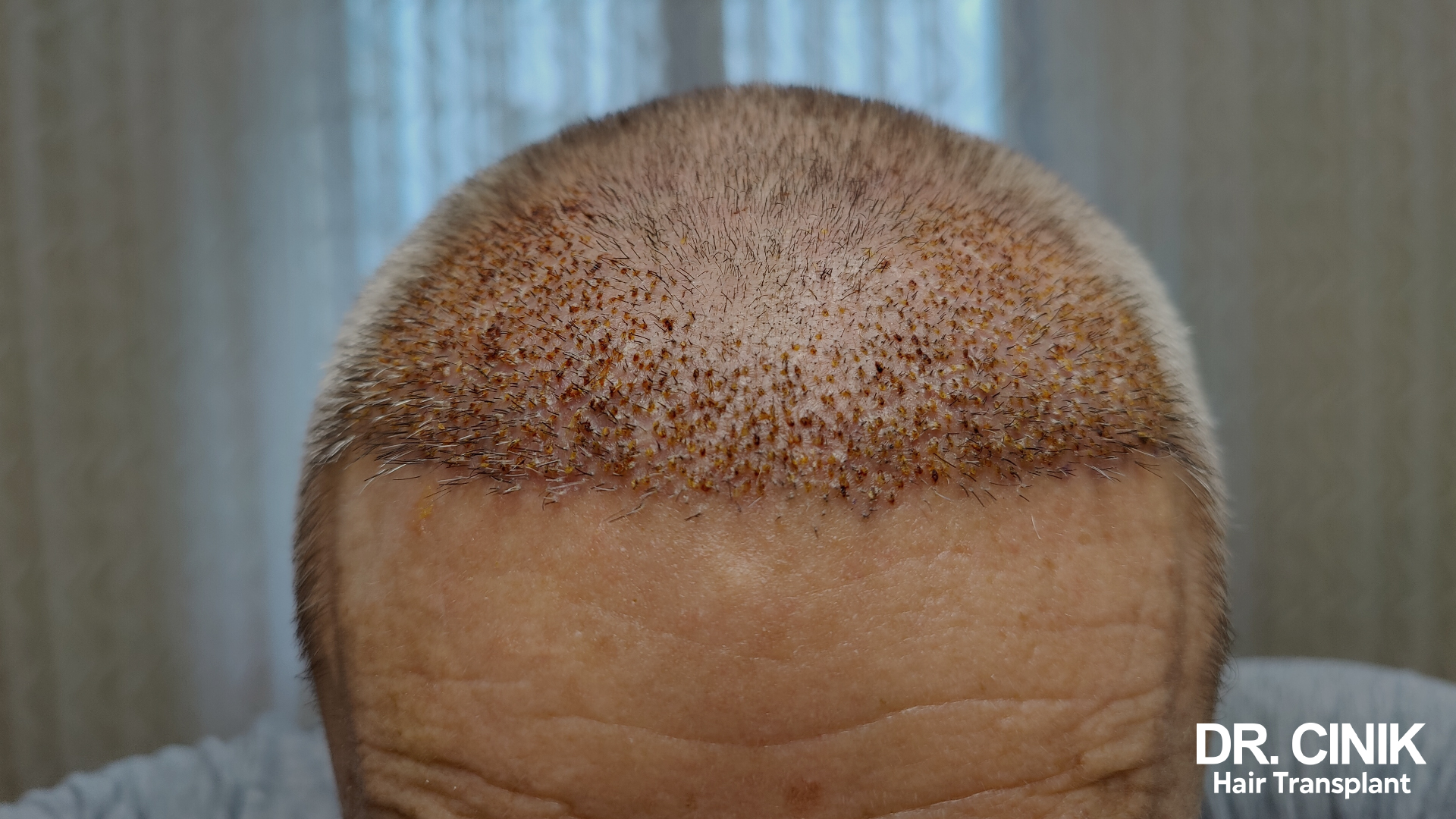
Abnormal Signs Requiring Attention
Certain skin manifestations merit particular attention as they may indicate a complication. Pimples larger than 5 millimetres in diameter or the presence of pustules with a purulent discharge should alert the patient. The appearance of extensive red patches or a fever exceeding 38.5°C also requires rapid medical assessment (Konior, 2013).
Intense and persistent pain, different from the usual post-operative discomfort, or excessive scalp heat are warning signs. Abnormal or heavy bleeding should also prompt prompt consultation. Dr Cinik has specific protocols for dealing with these signs, enabling rapid and appropriate treatment to prevent any complications.
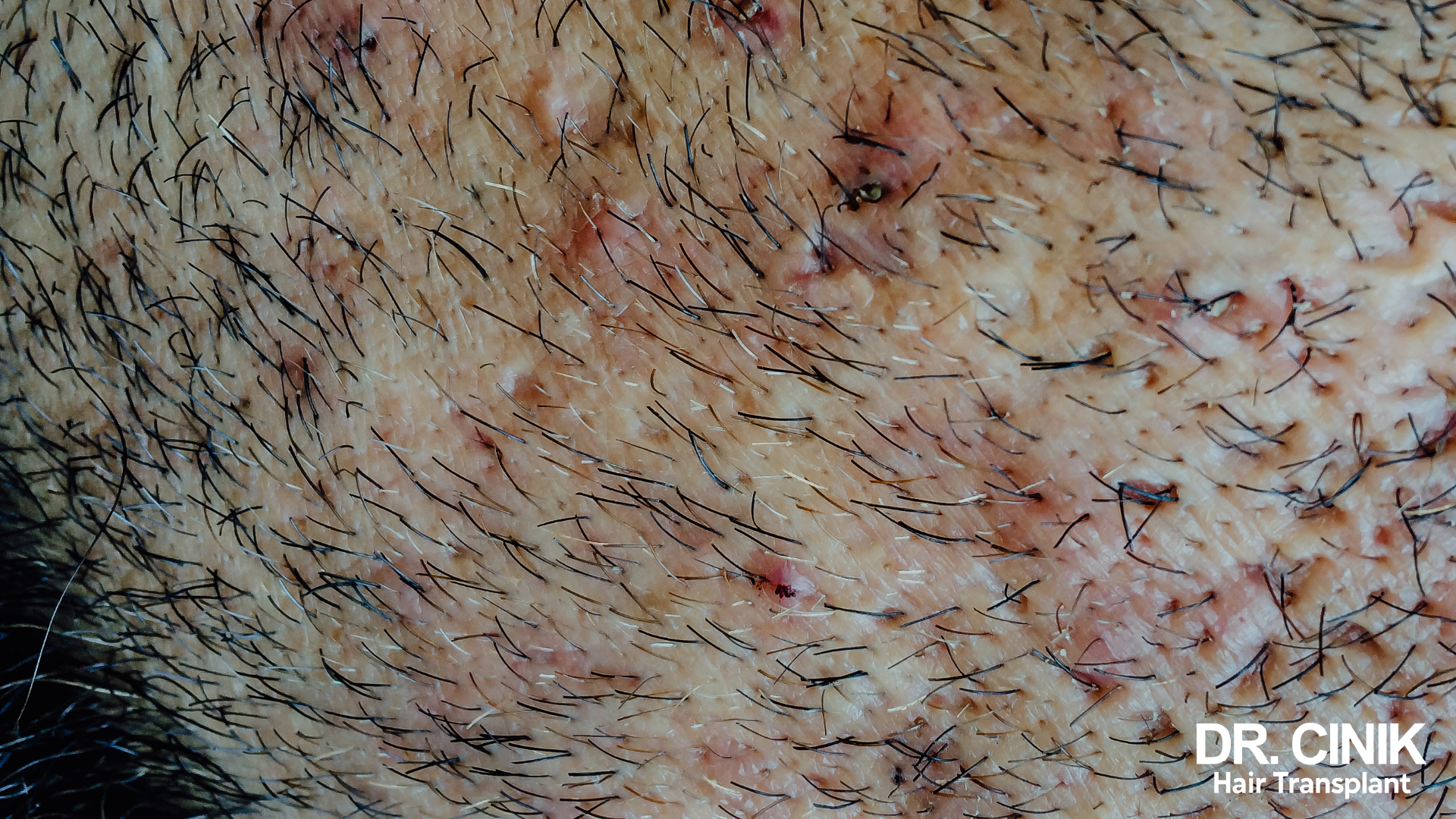
Mechanisms and Causes of Post-Hair Transplant Pimples
Main Physiological Causes
The development of pimples after a hair transplant is mainly the result of the body’s natural inflammatory reaction. During the operation, the micro-incisions made to implant the grafts trigger a cascade of local immune responses. This process stimulates the sebaceous glands, increasing their production of sebum, which can lead to temporary obstruction of the follicles (Umar et al., 2021).
The local immune response mobilises different types of cells, in particular lymphocytes and macrophages, which flock to the treated area to take part in the healing process. This intense cellular activity may manifest itself visibly in the form of pimples and redness.
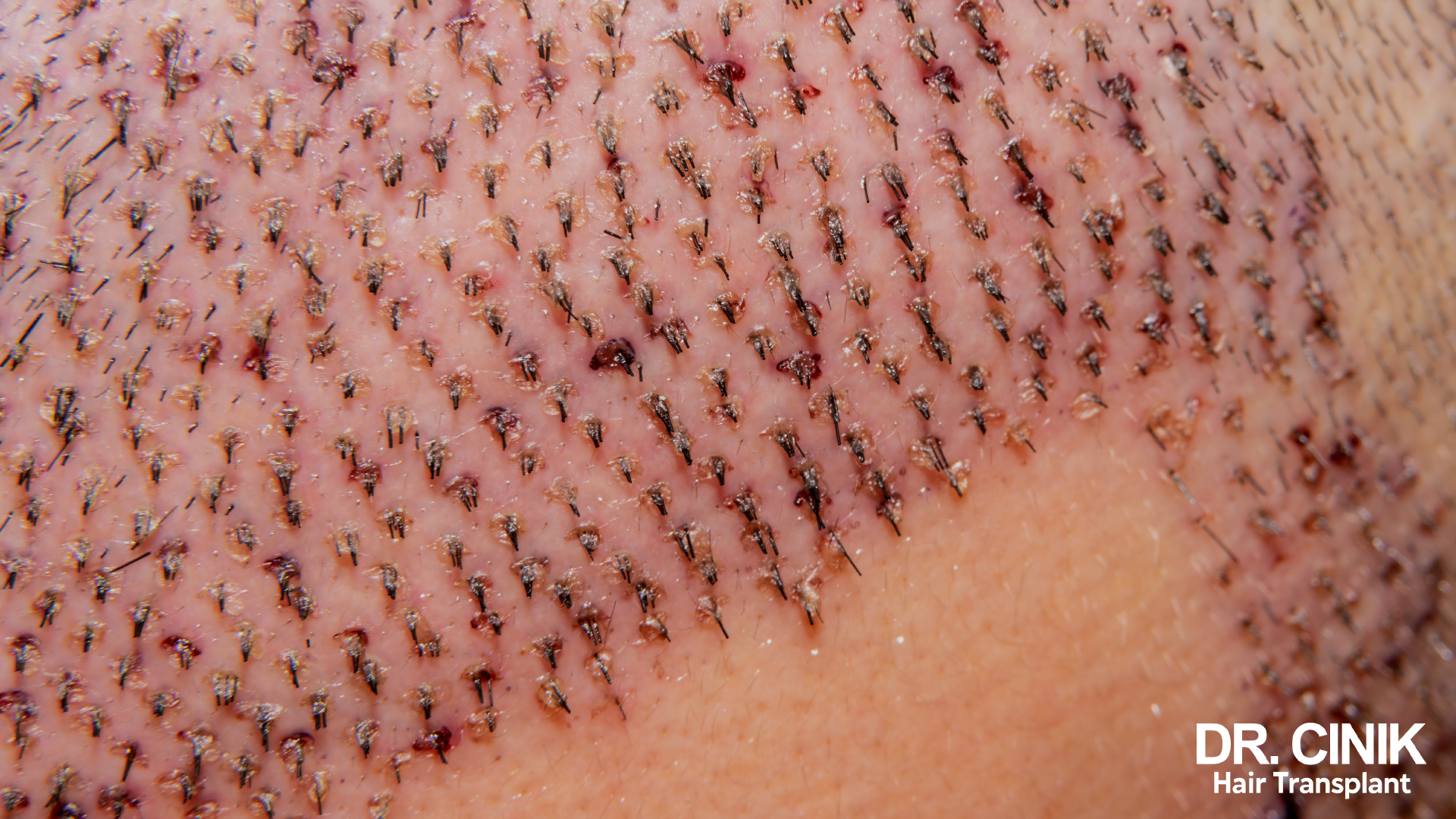
Documented Aggravating Factors
The environment plays a crucial role in the appearance and development of post-transplant pimples. Ambient temperatures above 25°C combined with high humidity can exacerbate skin reactions. Direct sun exposure in the weeks following surgery is also likely to intensify inflammation (Kerure & Patwardhan, 2018).
Daily habits significantly influence wound healing. Dr Cinik regularly observes that patients who frequently touch their scalp or do not strictly follow hygiene instructions develop more complications. The use of unsuitable hair products can also irritate the grafted area.
Specific Types of Post-Transplant Skin Complications
Post-Transplant Folliculitis
Post-transplant folliculitis is characterised by the appearance of small pimples centred on the follicles, measuring between 2 and 4 millimetres in diameter. These lesions generally have an inflammatory red halo and sometimes a central white spot. Affecting around 10-15% of patients, this complication typically evolves over 5 to 7 days with appropriate treatment (Konior, 2013).
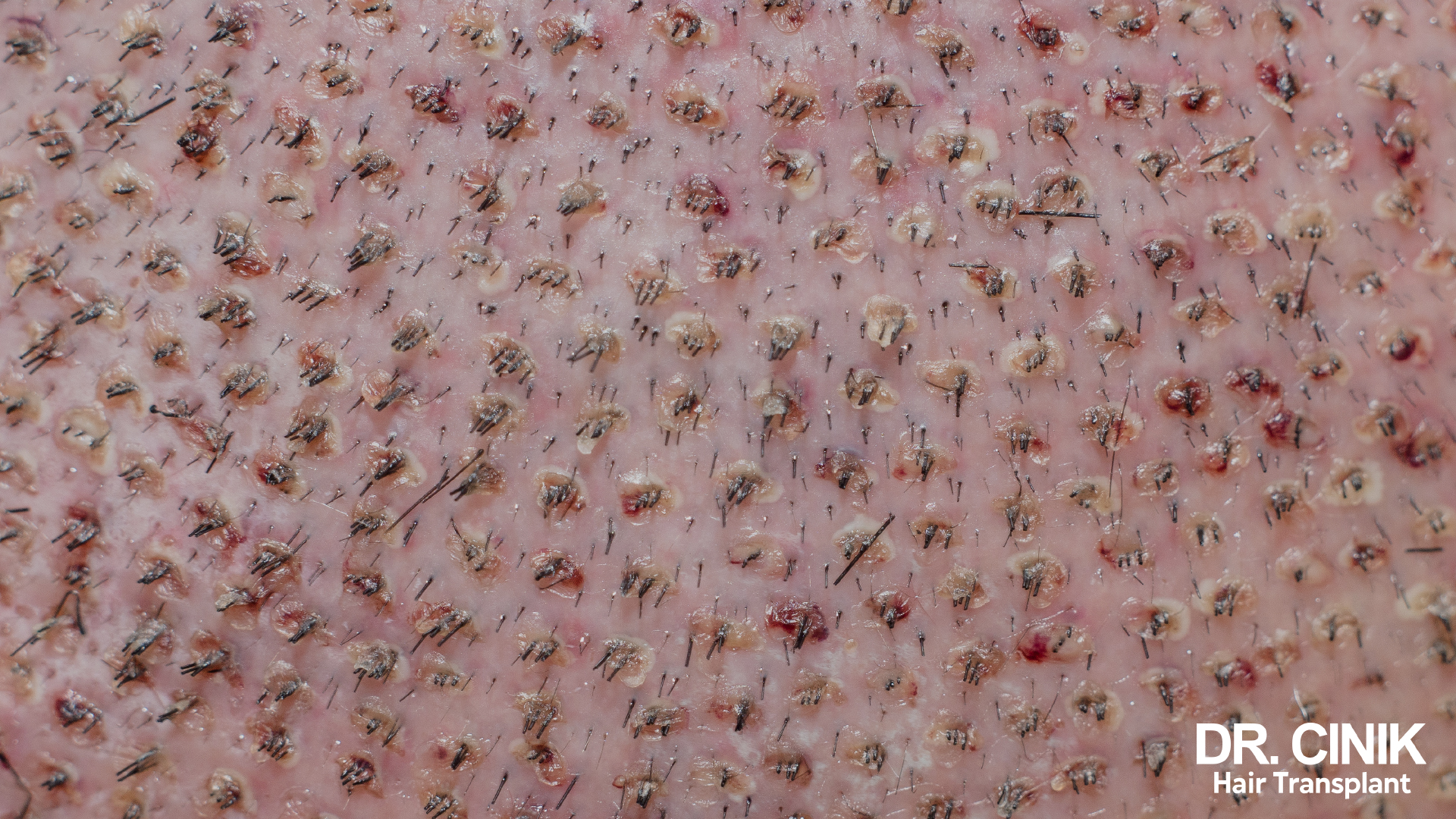
Post-Transplant Sebaceous Cysts
Sebaceous cysts manifest as firm subcutaneous nodules, measuring 3-8 millimetres. Affecting 5-7% of cases, they develop mainly when the sebaceous glands are disturbed during the operation. Although benign, these cysts sometimes require specific intervention to prevent them from becoming chronic (Kerure & Patwardhan, 2018).
Other Documented Manifestations
Microabscesses, although rare, can occur in some cases. These small purulent collections of less than 2 millimetres generally resolve in 3 to 5 days with appropriate treatment. Post-transplant seborrhoeic dermatitis manifests itself as red scaly patches accompanied by severe itching. Allergic reactions, which are less frequent, require personalised treatment depending on their nature and intensity.
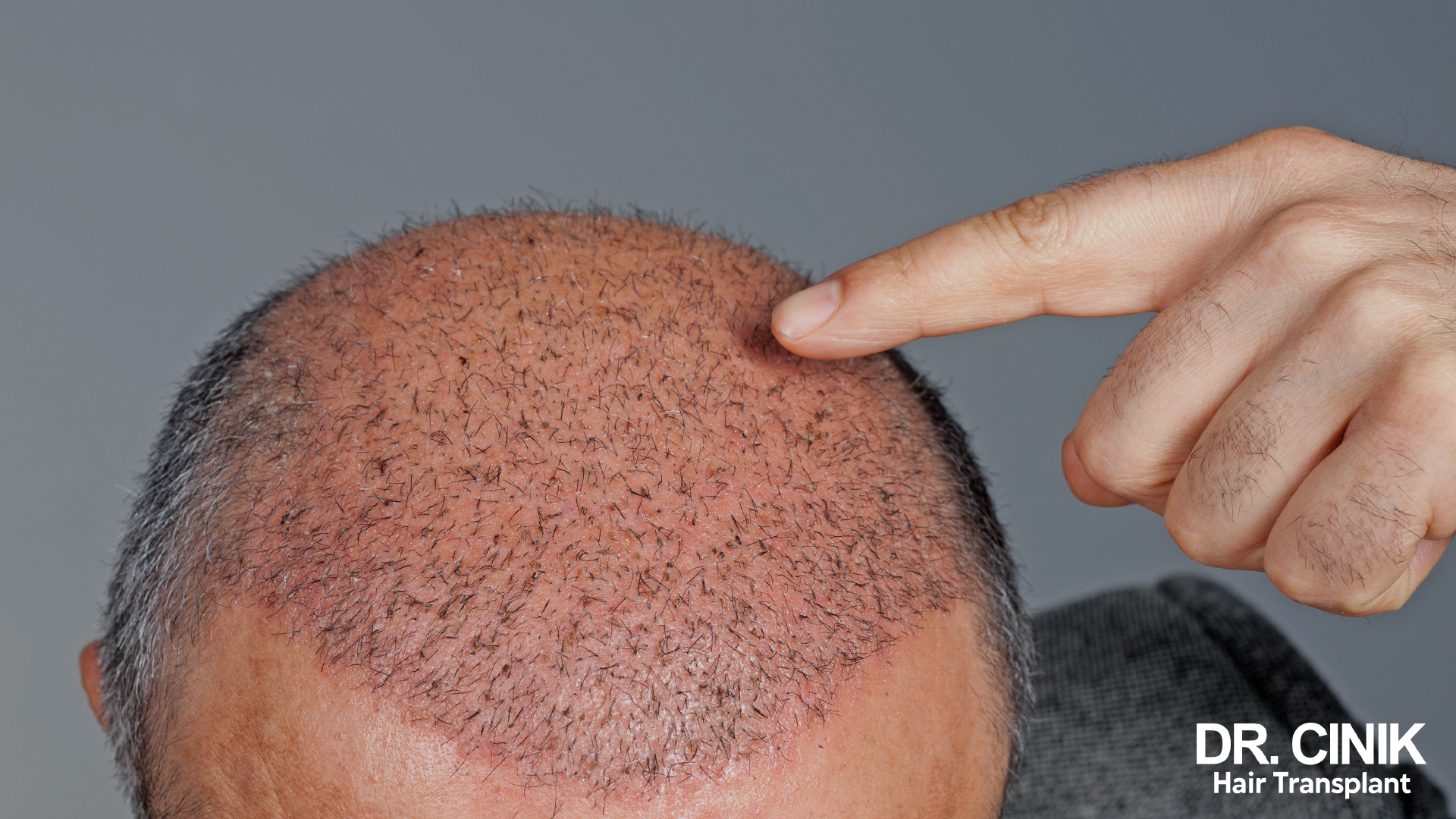
Medically Validated Treatment Protocols
Essential Daily Care
The successful treatment of post-transplant pimples is based on a rigorous care routine. In the morning, Dr Cinik recommends gentle cleansing with a sterile saline solution, followed by a specific post-transplant shampoo in the evening. Drying is done by gently dabbing the hair, without rubbing or irritating the scalp.
The effectiveness of the treatment depends largely on the quality of the products used. The shampoos prescribed contain soothing and antiseptic agents that promote healing and prevent infection. These treatments must be applied with care, respecting the sensitivity of the grafted area.
Medicinal Treatments According to Severity
In the case of persistent pimples, Dr Cinik adapts the treatment according to the intensity of the symptoms. For mild to moderate cases, a topical antibiotic cream such as Fucidin 2% or Mupirocin 2% may be prescribed for 5 to 7 days. These targeted treatments effectively control inflammation while promoting healing (Konior, 2013).
In more severe situations, the use of antiseptic solutions based on chlorhexidine 0.2% is particularly effective. These applications, applied 2 or 3 times a day, significantly reduce bacterial proliferation and speed up the resolution of pimples.
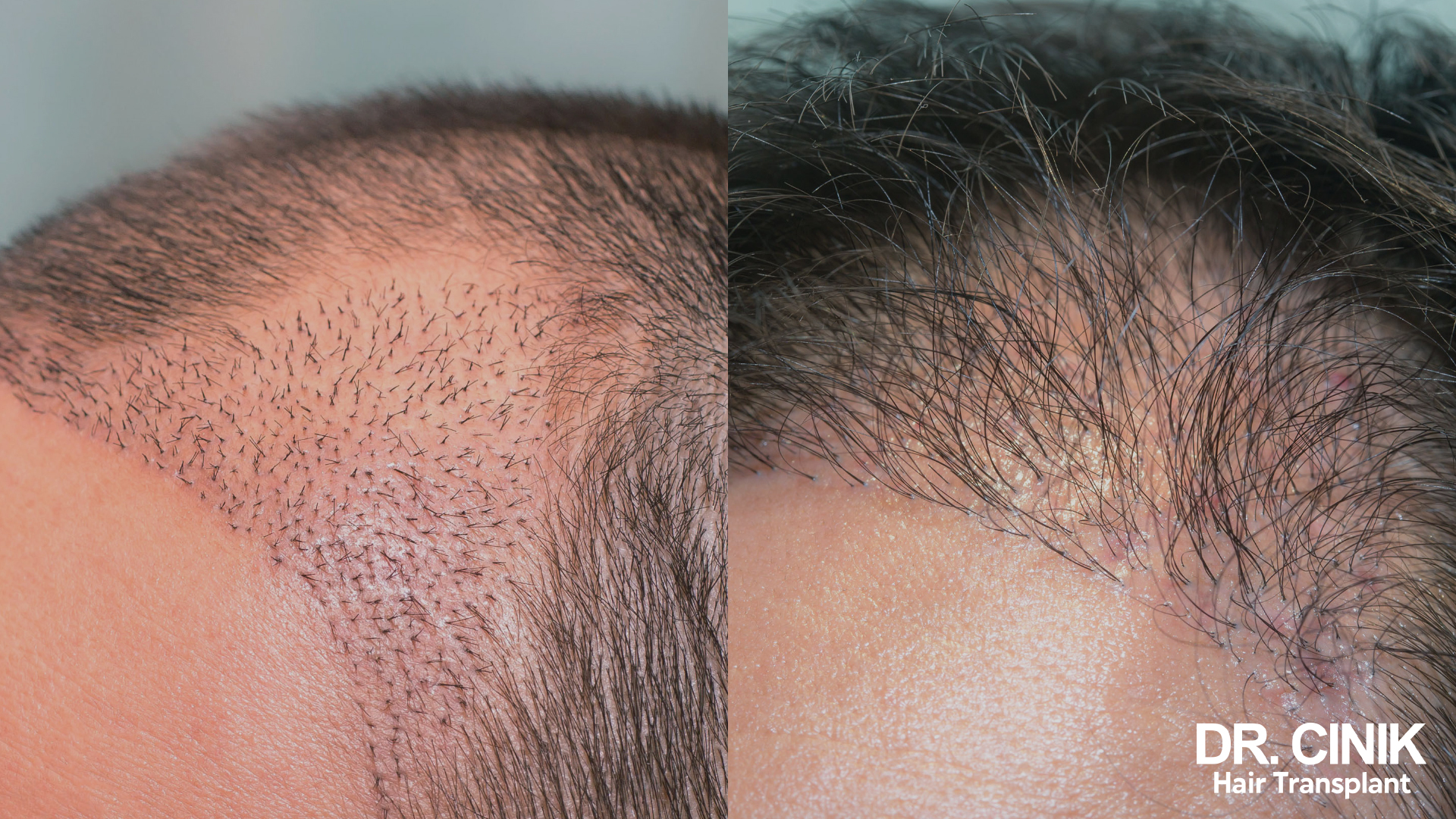
Prevention and Essential Precautions
Pimple prevention begins even before the operation. Careful preparation of the scalp, following Dr Cinik’s recommendations, considerably reduces the risk of complications. This preparatory phase includes a personalised assessment of risk factors and optimisation of the condition of the scalp.
During the post-operative period, scrupulous compliance with hygiene instructions is absolutely essential. Sun protection is crucial. Regular monitoring allows care to be adapted as the scarring progresses (Kerure & Patwardhan, 2018).
When to Seek Medical Advice
Rapid consultation is essential in the presence of specific warning signs. High fever, intense pain or a large discharge require immediate medical assessment. These symptoms may indicate a complication requiring appropriate treatment.
The persistence of pimples beyond three weeks or their worsening despite the prescribed treatment should also prompt a consultation. Dr Cinik provides personalised follow-up and remains available to respond to his patients’ concerns throughout the recovery process.
This comprehensive approach, combining prevention, appropriate treatment and regular follow-up, helps to optimise the results of the transplant while minimising complications. The expertise of Dr Cinik and his team guarantees professional and reassuring care for every patient.
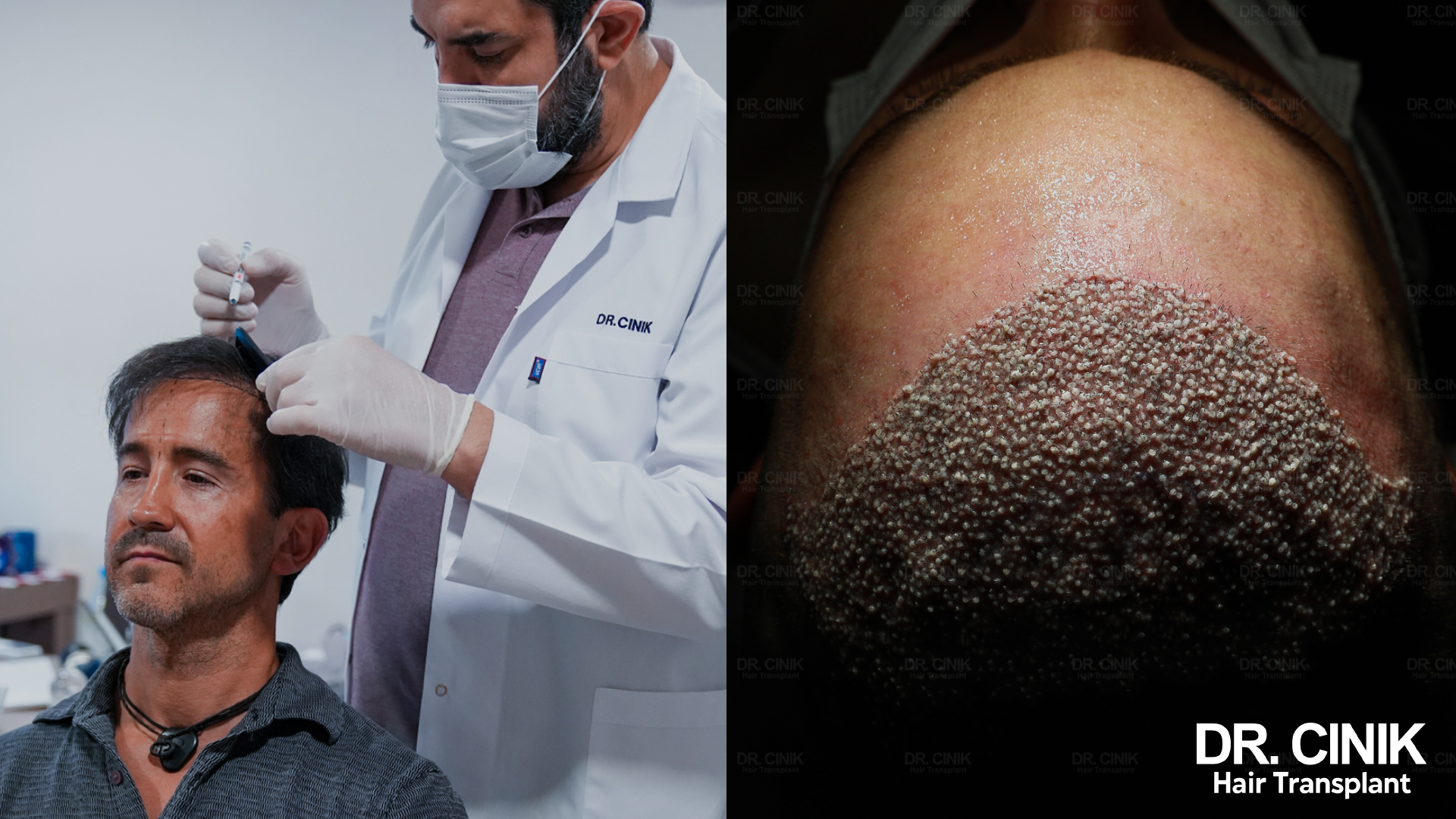
Practical Guidelines for the Day-to-Day Management of Pimples
Post-Transplant Pimples Management
Managing post-transplant pimples requires a methodical and patient approach. Dr Cinik recommends adopting a precise care routine, adapted to each phase of healing. During the first few days, use gentle gestures and avoid excessive manipulation of the grafted area.
Hydration plays a fundamental role in the healing process. Drink enough water and maintain a balanced diet rich in vitamins and minerals. These habits promote optimal healing and strengthen the scalp’s natural defences.
Complementary Natural Solutions
In addition to medical treatments, certain natural solutions can relieve the discomfort associated with pimples. Aloe vera, known for its soothing and anti-inflammatory properties, can be applied as a pure gel. Dr Cinik endorses this approach, provided that medical-grade products are used.
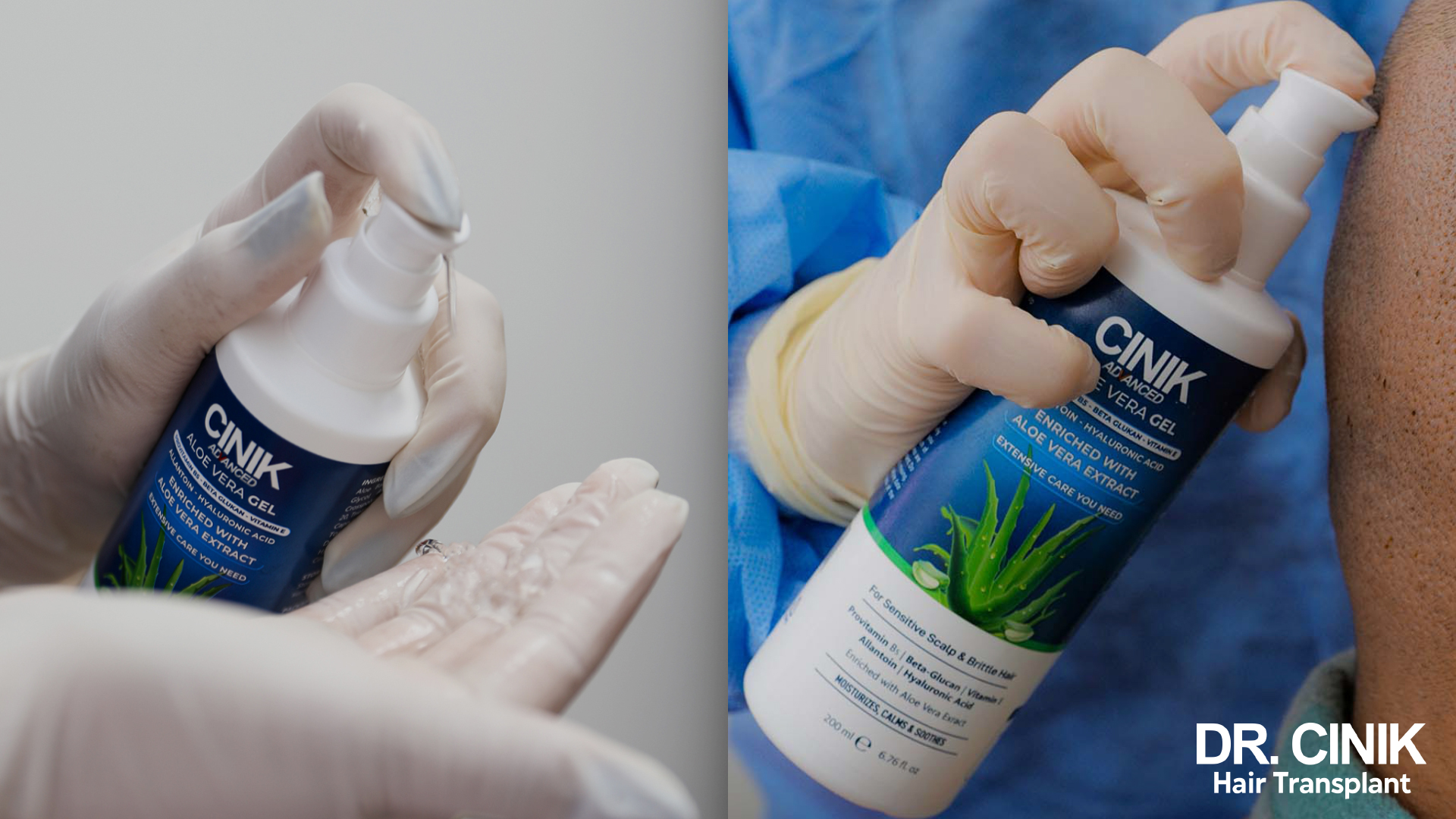
Thermal water compresses, applied gently, soothe itching and reduce inflammation. This simple but effective method is the ideal complement to the standard skin care protocol.
Long-Term Follow-Up and Prevention of Recurrence
Post-transplant follow-up doesn’t stop when the pimples disappear. Dr Cinik draws up a personalised programme of regular check-ups to monitor the progress of the transplant and prevent any complications later on. These appointments allow care to be adjusted according to the specific needs of each patient.
Preventing recurrences involves adopting good hair hygiene practices over the long term. Dr Cinik’s patients benefit from personalised advice to maintain the health of their scalp and optimise the growth of transplanted hair.
Conclusion
Pimples after a hair transplant, although unpleasant, represent a normal transitional phase in the healing process. With appropriate management and compliance with Dr Cinik’s recommendations, these skin manifestations generally resolve without complication.
The expertise of Dr Cinik and his team, combined with proven treatment protocols, guarantees optimal recovery. The key to success lies in early treatment and strict adherence to post-operative instructions.
For more information or to arrange a consultation, please do not hesitate to contact Dr Cinik’s clinic. Our team remains at your disposal to answer any questions you may have and to support you in your hair transplant journey.
Sources
Kerure, A. S., & Patwardhan, N. (2018). Complications in Hair Transplantation. Journal of Cutaneous and Aesthetic Surgery, 11(4), 182–189. https://pmc.ncbi.nlm.nih.gov/articles/PMC6371733/
Konior, R. J. (2013). Complications in hair-restoration surgery. Facial Plastic Surgery Clinics of North America, 21(3), 505-520. https://pubmed.ncbi.nlm.nih.gov/24017992/
Umar, S., Lee, D. J., & Lullo, J. J. (2021). A retrospective cohort study and clinical classification system of acne keloidalis nuchae. Journal of Clinical and Aesthetic Dermatology, 14(5), E61-E67. https://pubmed.ncbi.nlm.nih.gov/34055191/



